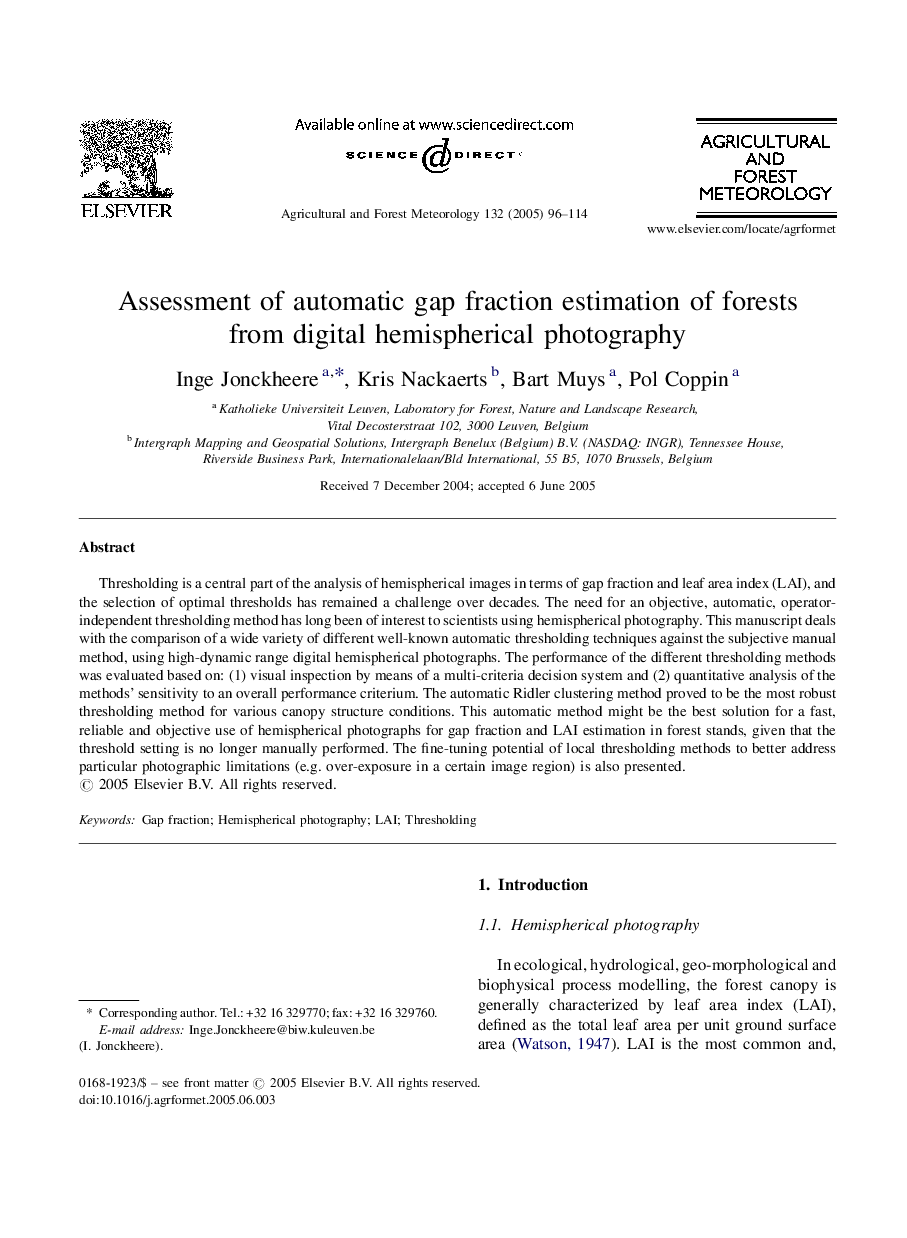| Article ID | Journal | Published Year | Pages | File Type |
|---|---|---|---|---|
| 9619465 | Agricultural and Forest Meteorology | 2005 | 19 Pages |
Abstract
Thresholding is a central part of the analysis of hemispherical images in terms of gap fraction and leaf area index (LAI), and the selection of optimal thresholds has remained a challenge over decades. The need for an objective, automatic, operator-independent thresholding method has long been of interest to scientists using hemispherical photography. This manuscript deals with the comparison of a wide variety of different well-known automatic thresholding techniques against the subjective manual method, using high-dynamic range digital hemispherical photographs. The performance of the different thresholding methods was evaluated based on: (1) visual inspection by means of a multi-criteria decision system and (2) quantitative analysis of the methods' sensitivity to an overall performance criterium. The automatic Ridler clustering method proved to be the most robust thresholding method for various canopy structure conditions. This automatic method might be the best solution for a fast, reliable and objective use of hemispherical photographs for gap fraction and LAI estimation in forest stands, given that the threshold setting is no longer manually performed. The fine-tuning potential of local thresholding methods to better address particular photographic limitations (e.g. over-exposure in a certain image region) is also presented.
Related Topics
Physical Sciences and Engineering
Earth and Planetary Sciences
Atmospheric Science
Authors
Inge Jonckheere, Kris Nackaerts, Bart Muys, Pol Coppin,
